First of all, what do you mean by UX?
User experience (UX) refers to a person’s emotions and attitudes about using a particular product, system or service.
User experience includes the practical, experiential, affective, meaningful and valuable aspects of human–computer interaction and product ownership… (Yawns) Let’s try explaining that for humans: UX is the process of understanding both the user and the capabilities of an application to ensure the customer gets what they want quickly, easily and seamlessly, and doing so in a way that’s as rational or flamboyant as the brand dictates. It’s not just listening to a customer and then delivering what they ask you for, but understanding the root causes of perception and the true needs of your audience to deliver something that meets and exceeds an expectation in service. In my mind, UX is not limited to the digital world. It’s every single touch-point, from business cards through to the retail experience.
“UX is not limited to the digital world. It’s every single touch point, from business cards through to retail experience”
It’s also more than just how it affects the consumer. One of the largest UX projects I’ve ever worked on involved improving the daily performance of traders in a bank, where even the smallest impact could be measured in billions of dollars!
The most important things to understand about UX is that, firstly, it is not User Interface design, we’re not talking about the bells, whistles, effects and animations of an app, it’s about understanding and balancing all the facets that can influence the operation of a product or service and balancing them in the best way possible. Secondly, you need to realise that UX affects every single business, without exception, and that if you’re not designing your brand experience “user first”, then it’s unlikely those users will behave in the way you want.
What are the most common errors you see businesses making when it comes to UX, particularly where websites and apps are concerned?
Mistake 1. Focus on features over benefits
Every business has their own products or services and those products or services may be innovative, cheap or brilliant in a hundred different ways, so they will design the experience around these features; Screaming from the rooftops about technical innovation or something equally bewildering for all save for those that are involved in the build. But guess what, the user couldn’t care less! Their only concern is what it means for them. So what if these football boots have 1001 scientifically developed features that make them the most advanced on the market?! All the user wants to know is “Will they make me play like Ronaldo?”
Mistake 2. See something in the market you like? Copy it.
Taking inspiration from elsewhere is brilliant, and I love it when a client gives examples of things they like elsewhere. It gives us insight into their preferences and when we match those with the rest of our research around the business, the product and the target audience. Couple this with determining WHY that particular reference is successful, and we can understand the factors that a user needs us to respond to in a much more impactful way. We are then in a great place to build something that they love and that truly works for the market. However, if all they want to do is replicate the feature without any consideration of their own unique positioning then we’re doomed before we’ve even started.
Mistake 3. Underestimate the importance of research and planning
In the vast majority of cases, clients most value things that are shiny and tangible; things that that they can appreciate visually, browse and play around with. On the other hand, they often attach very little value to market research or user testing in the real sense of the term. We are provided with an unfiltered response to our product in order that discoveries at this stage of development truly change the product for the better. Before you have seen their effects first hand, these things feel abstract and intangible, and therefore unimportant. The uninitiated client would rather pay 50% of the cost, have you skip all that stuff and move straight to the colouring in. The trouble is that it’s all that ‘boring stuff’ at the start that will determine whether or not the colouring is done using the right crayons and stays between the lines. In fact, if your designers aren’t spending at least half of their time researching and planning then you should have serious concerns!
If your designers aren’t spending half their time researching […] then you should have serious concerns!
Mistake 4. Build with a very specific agenda in mind
Unique functionality is important, search engine optimisation is important, the data capture process is important, the way you integrate social media is important. However, if any of these takes absolute precedence over everything else then the user experience is invariably destroyed. You must take a holistic approach and be willing to accept compromise.**
**Unless of course, you’re about to change the world, but more often than not, it is a single feature that sparks a revolution, so look to build an MVP, excel at that particular feature and use best practises elsewhere. This will save time and money as you bring your product to market. When it’s raining cash, then you can start to look at additional improvements elsewhere.
Mistake 5. Try to appeal to everyone
If you want to appeal to the absolute masses, fine, but you’ll probably need to add a few zeros to that marketing budget. Most companies, particularly those in their early stages, need to focus on the absolute core of their target audience; the more specific the better. Maybe her name is Jean, she’s 41 years old with two teenage daughters and a black labrador, and following a recent divorce, she’s now contemplating a move from the city to the country… Now that I’m starting to build up a clear picture of who Jean is, I can build up an equally clear picture of how to reach her. So rather than shouting at Jean across a crowded room with 500 other brands also competing for her attention, I can take her to a quiet corner and have a direct and meaningful conversation about how to make her life better. What do you think could be more effective in creating a new customer and advocate?
Mistake 6. Fail to Prototype
No matter how thorough your research and planning, certain assumptions will still have been made, so before building the final site/app we need to first create an interactive demo. We then test, not to prove our assumptions correct but to identify where they were wrong. This is about rapid learning and iteration.
Only once we’ve fully optimised the prototype do we move onto the final build. This allows the designers to focus on colour, typography, spacing, etc, without being distracted by functionality or structure.
People view prototyping as a luxury, in reality it saves time, money and the project is 100 times more likely to succeed
Like planning and research, people view prototyping as a luxury, whereas in reality it saves time, money and the project is about a hundred times more likely to succeed.




